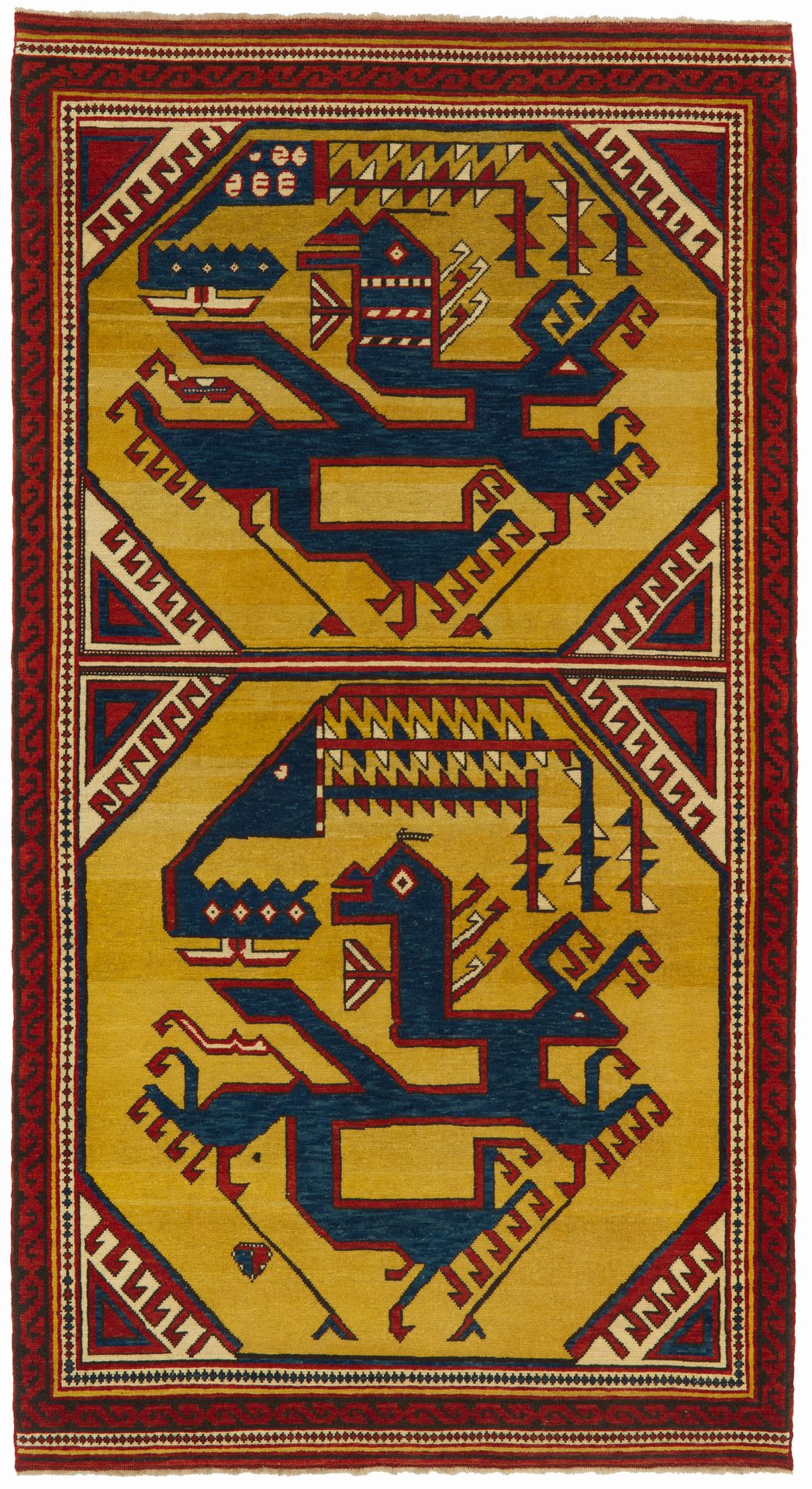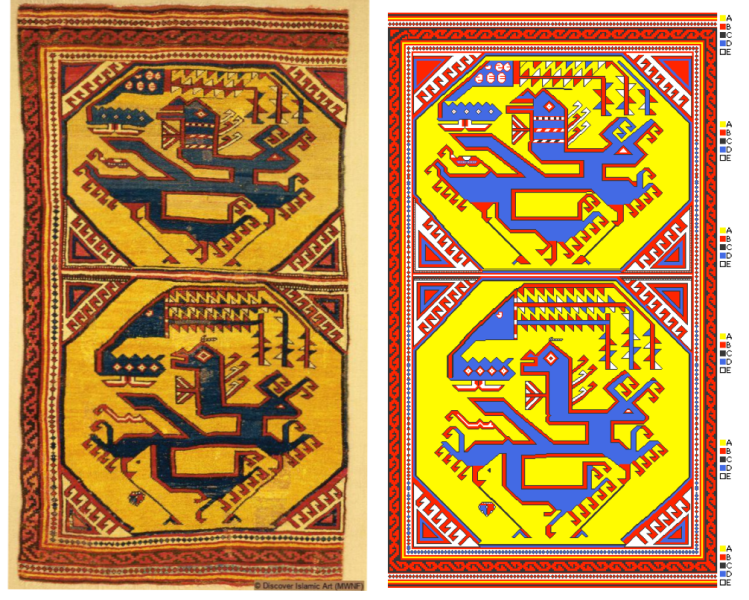
This 15th-century carpet, showing the battle of the dragon and the phoenix, is one of the most crucial animal carpets of the early Ottoman period that have become known to the present day. Two highly stylized animals, a dragon, and a phoenix, fight against a yellow background within two octagonal spaces. The phoenix is swooping down onto the dragon from above. The image is more apparent in the lower octagonal casing than in the upper. The outer border is composed of semi-palmette tendrils framed on both sides by an edging of little rosettes. The original border appears missing on both the left and right sides. It is possible that the carpet was originally more expansive in shape, featuring a more significant number of octagonal compartments. This would make it more akin to the animal carpets reproduced in paintings. The dragon and phoenix motif, which originated in China – where yellow was considered to be the color of the sovereign – was introduced into Islamic art in the AH 7th / AD 13th century with the arrival of the Mongols, as is demonstrated by its ubiquitous presence on several works of art, made in a variety of materials.
Reviving a unique piece is not about creating so-called replicas or copies. The characteristics (pattern, color tone, material, weave, etc.) are unique to Ararat, and we are proud of creating unique and our own. We choose our original colors and patterns while staying true to the original for the carpets we produce by our design team in our design office in Malatya.
The designs are first drawn by hand on grift paper and colored. Generally, designs are prepared in sections, but we prefer to prepare the design of the carpet as a whole. The hand-drawn design is then transferred to digital media on the computer. Thanks to Ararat’s software, we get the actual carpet size in a grid and a particular ‘real carpet size’ printout in which the dimensions and colors are defined. This way, we eliminate the possibility of weavers making mistakes and prevent their eyes from getting tired and color confusion.
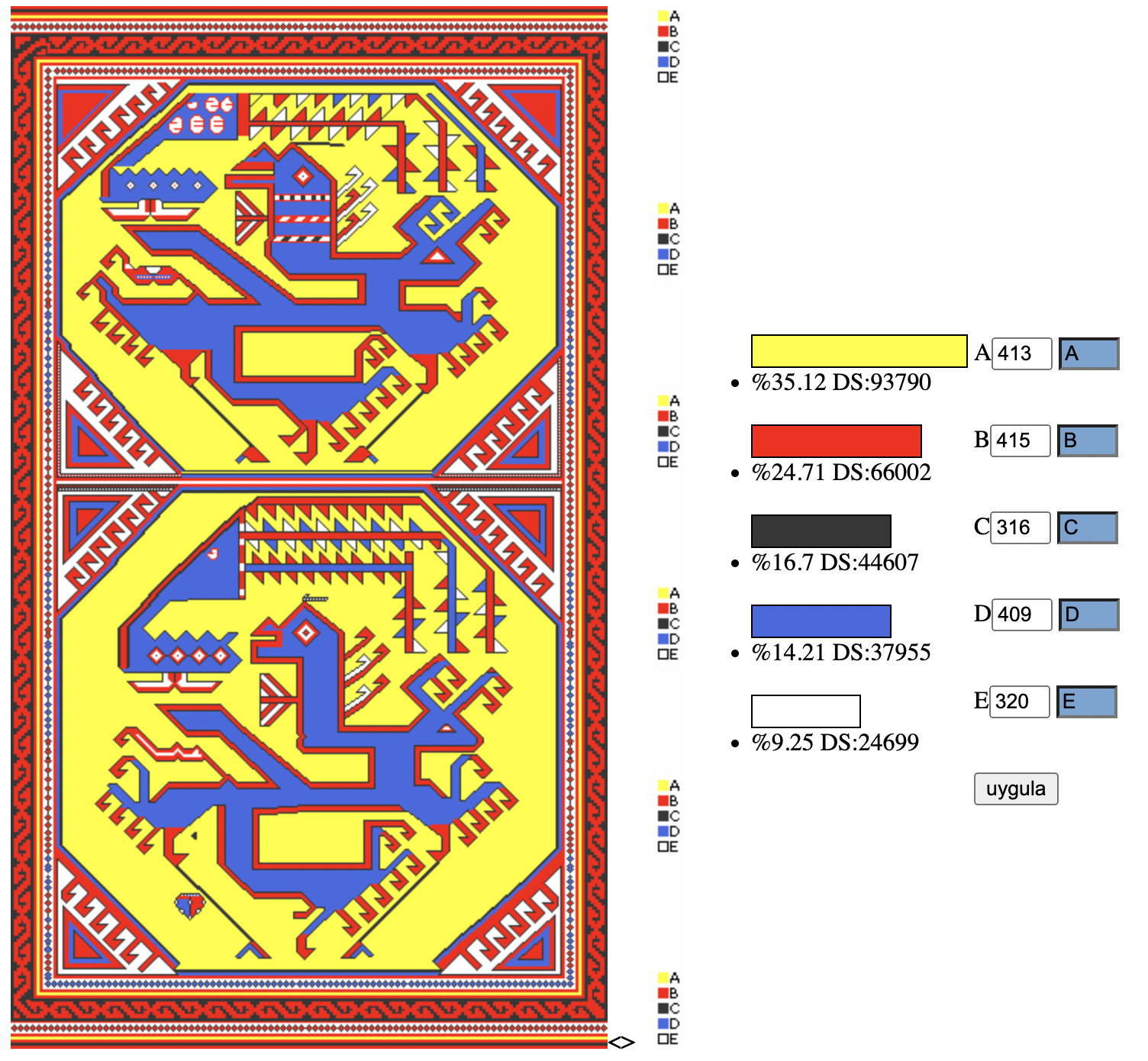 Ararat Rugs Design Software: Our software engineer developed a unique design software according to our color database; we can change the HEX codes to each of our unique colors (indicated in the Ararat Color Chart Rug). We can choose one of our designs and change the color of the carpet according to our color chart.
Ararat Rugs Design Software: Our software engineer developed a unique design software according to our color database; we can change the HEX codes to each of our unique colors (indicated in the Ararat Color Chart Rug). We can choose one of our designs and change the color of the carpet according to our color chart.
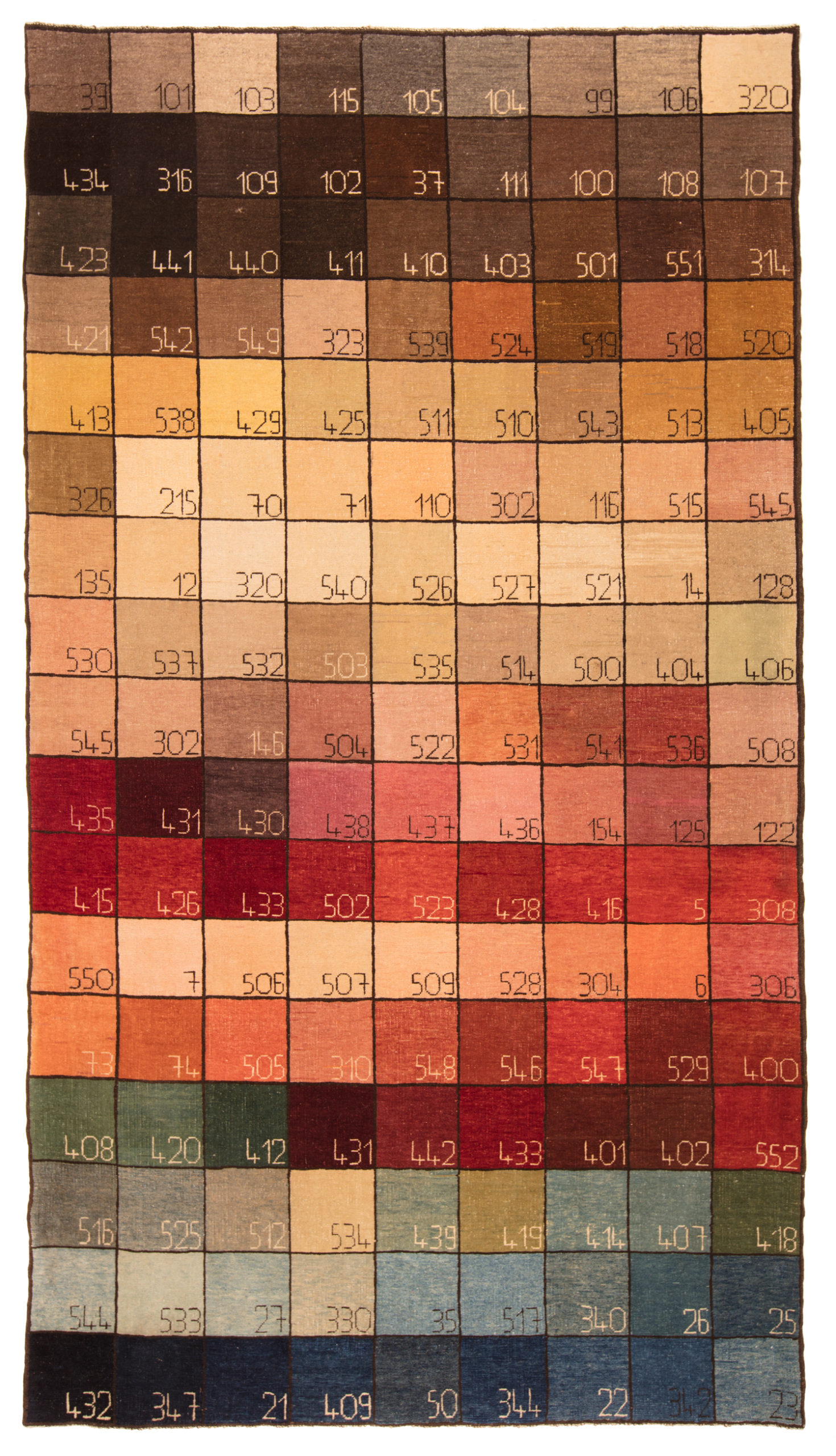 Ararat Color Chart Rug
Ararat Color Chart Rug
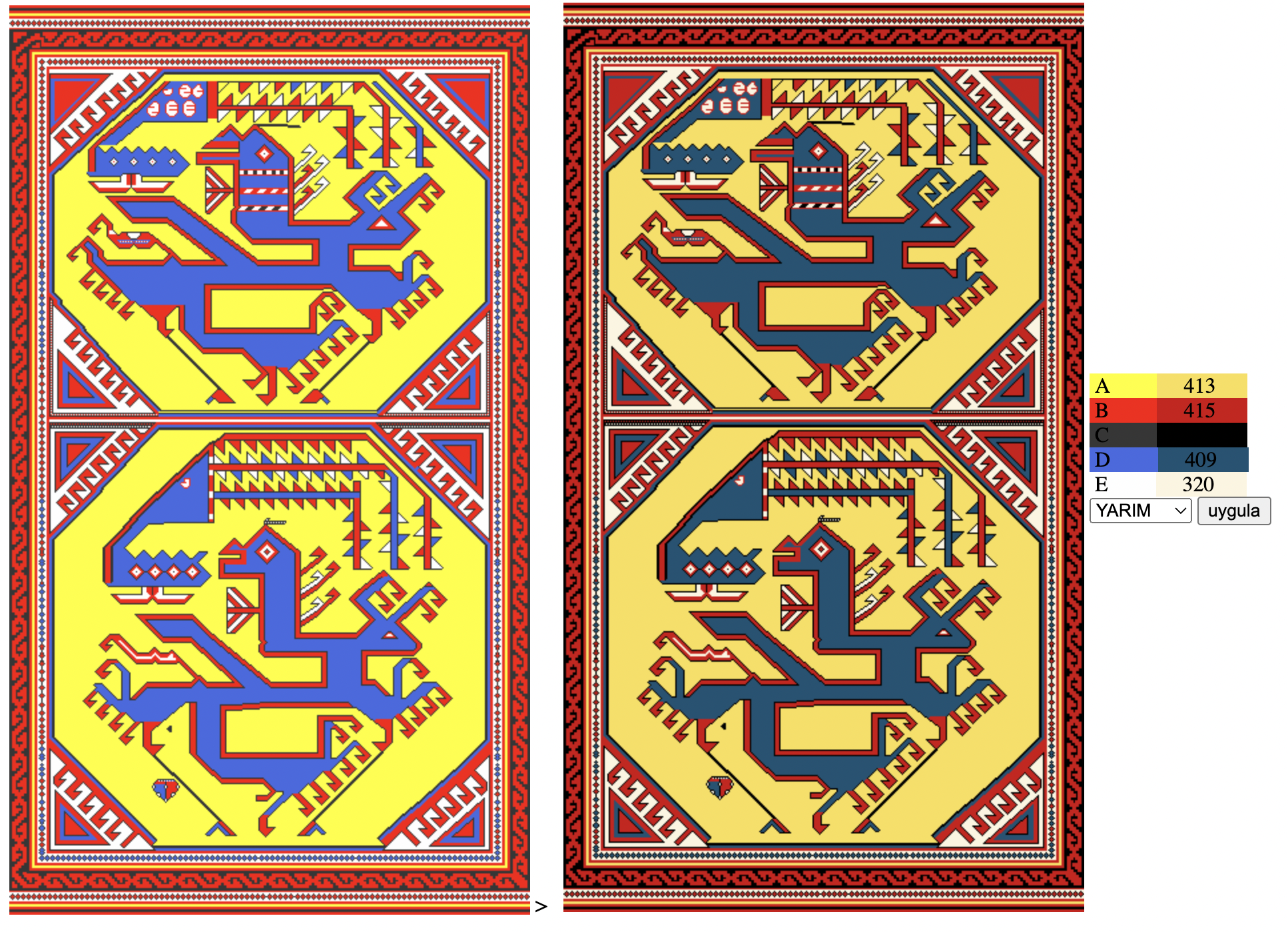 We have chosen the colors for this rug: 413 Khaki, 415 Imperial Red, 409 Gunmetal Blue, 316 Dark Brown, and 320 Natural Wool Color. These colors match the 15th-century example and the same natural dyes and wool. So we can revive the 15th Century Berlin Museum’s Phoenix and Dragon carpet in the 21st Century.
We have chosen the colors for this rug: 413 Khaki, 415 Imperial Red, 409 Gunmetal Blue, 316 Dark Brown, and 320 Natural Wool Color. These colors match the 15th-century example and the same natural dyes and wool. So we can revive the 15th Century Berlin Museum’s Phoenix and Dragon carpet in the 21st Century.
According to the number of colors and knots specified in the software, we automatically output the large-scale pixel version of the entire design in one-to-one size. On these printouts, we also perform the quality control of the decimeters of the carpet on the pattern and how often it should be woven. In the figure below, you can see this decimeter length measure and the design in pixels divided into squares; this is a great convenience we provide to our weavers. In this way, the symmetry is preserved, and the carpet produced can match the original design precisely.
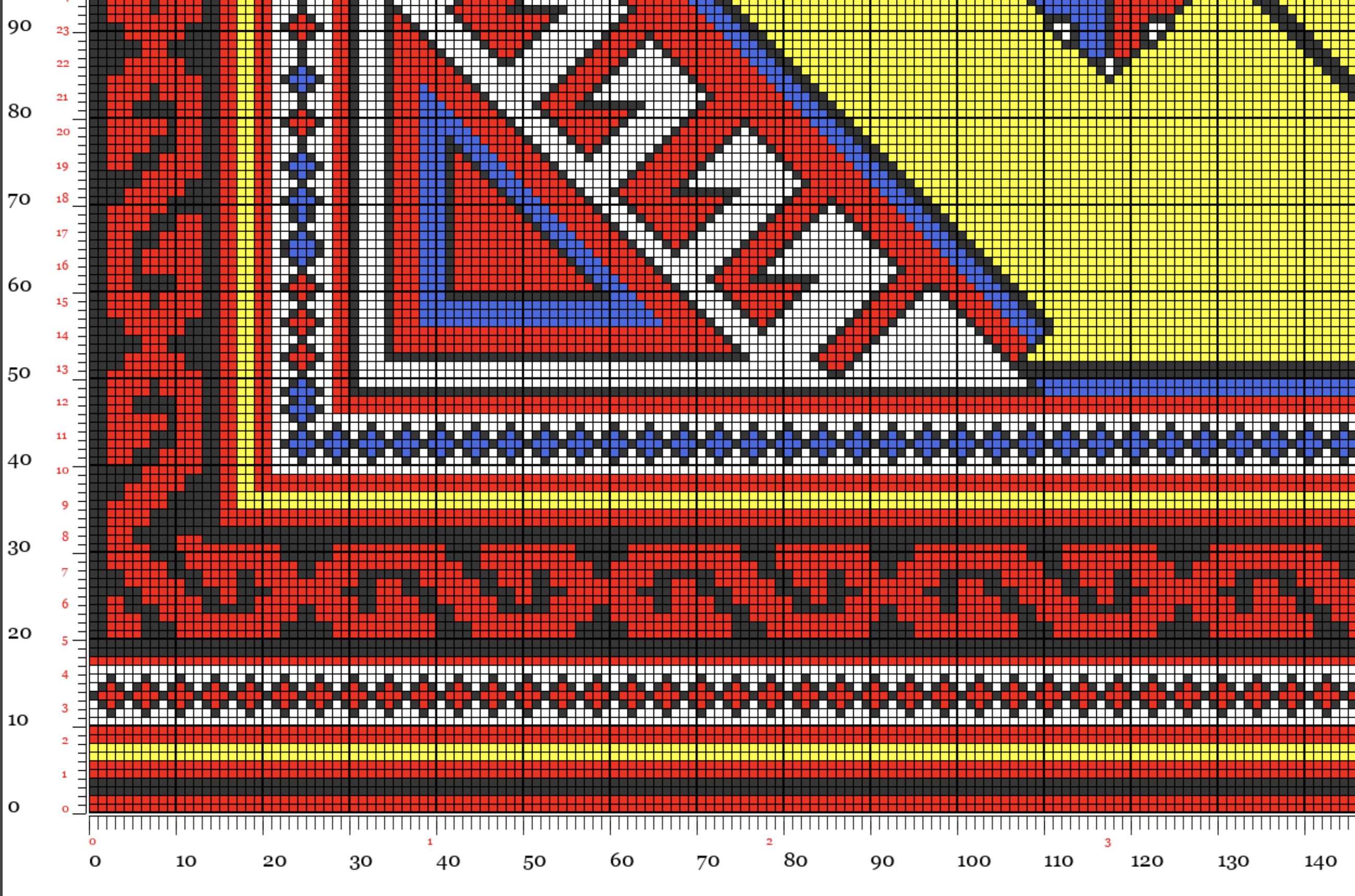
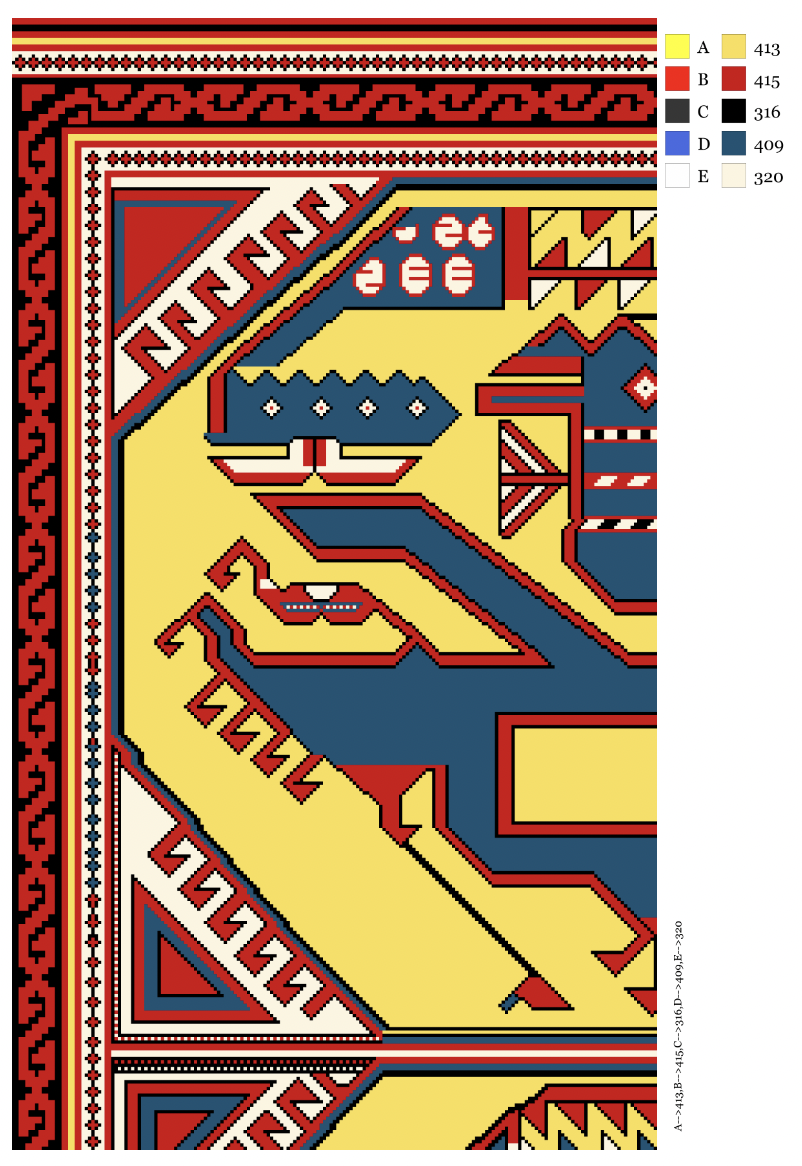
Additionally, another software, ‘Ararat Color Changer, ’ helps us reinterpret the colors of the carpet design; it’s linked to our color database, which uses HEX codes close to our natural colors in the carpets. Our designers use this software to see the different color variations of similar designs to reinterpret. When we produce oversized carpets, we also weave a wagireh version of the oversized rug to ensure the exact color and design to start production.
You may see different color interpretations for the same carpet below;
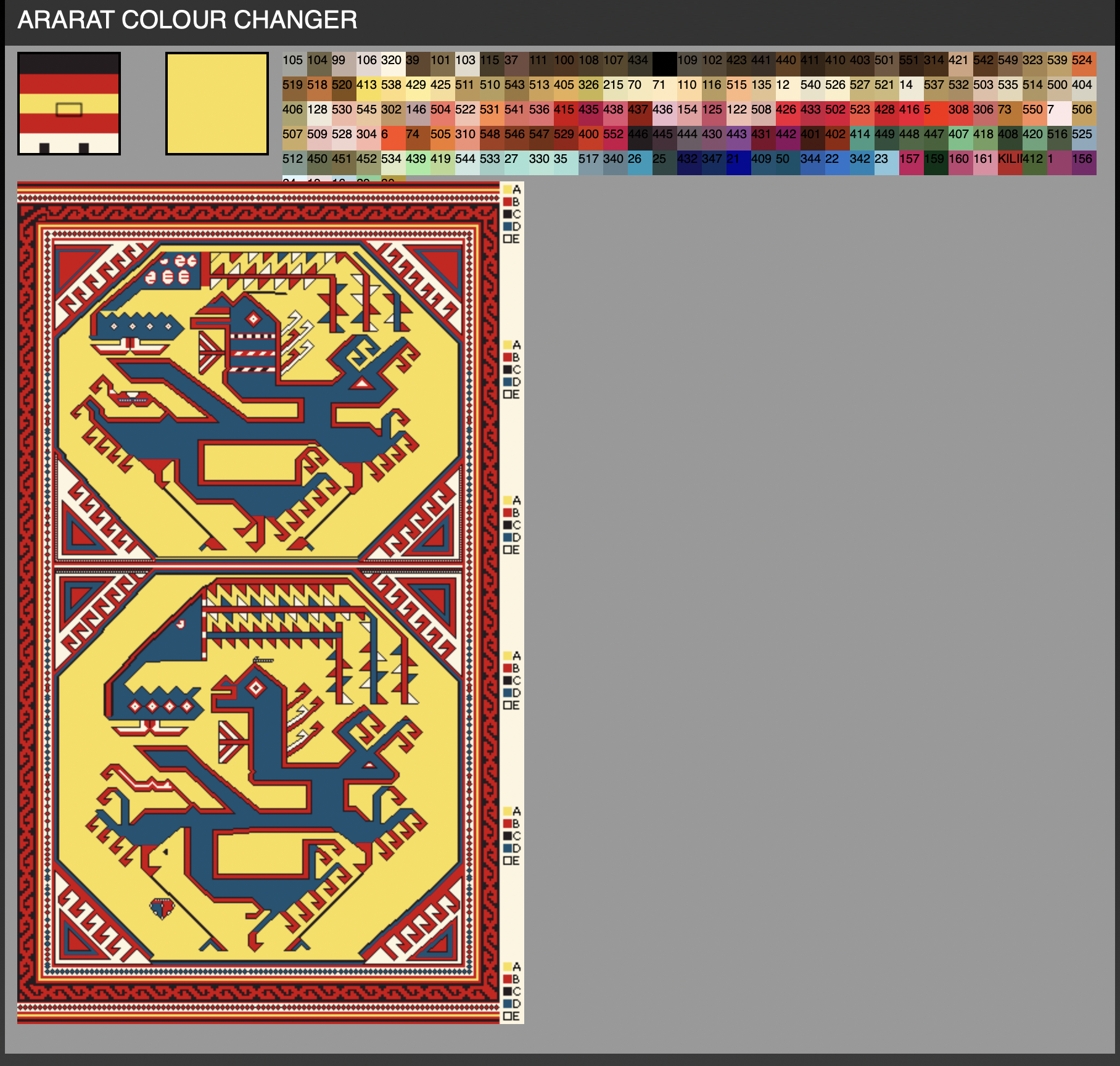
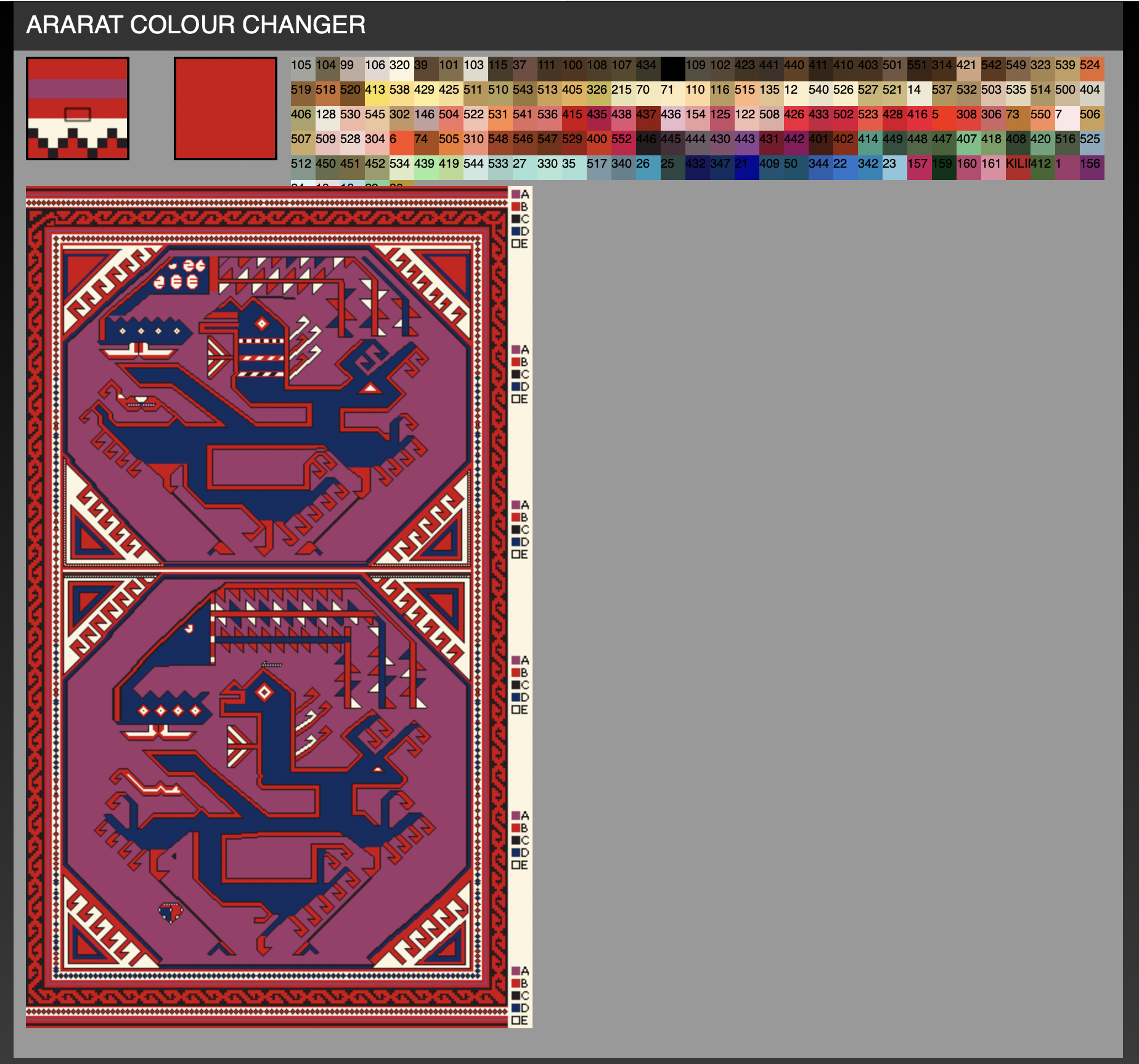
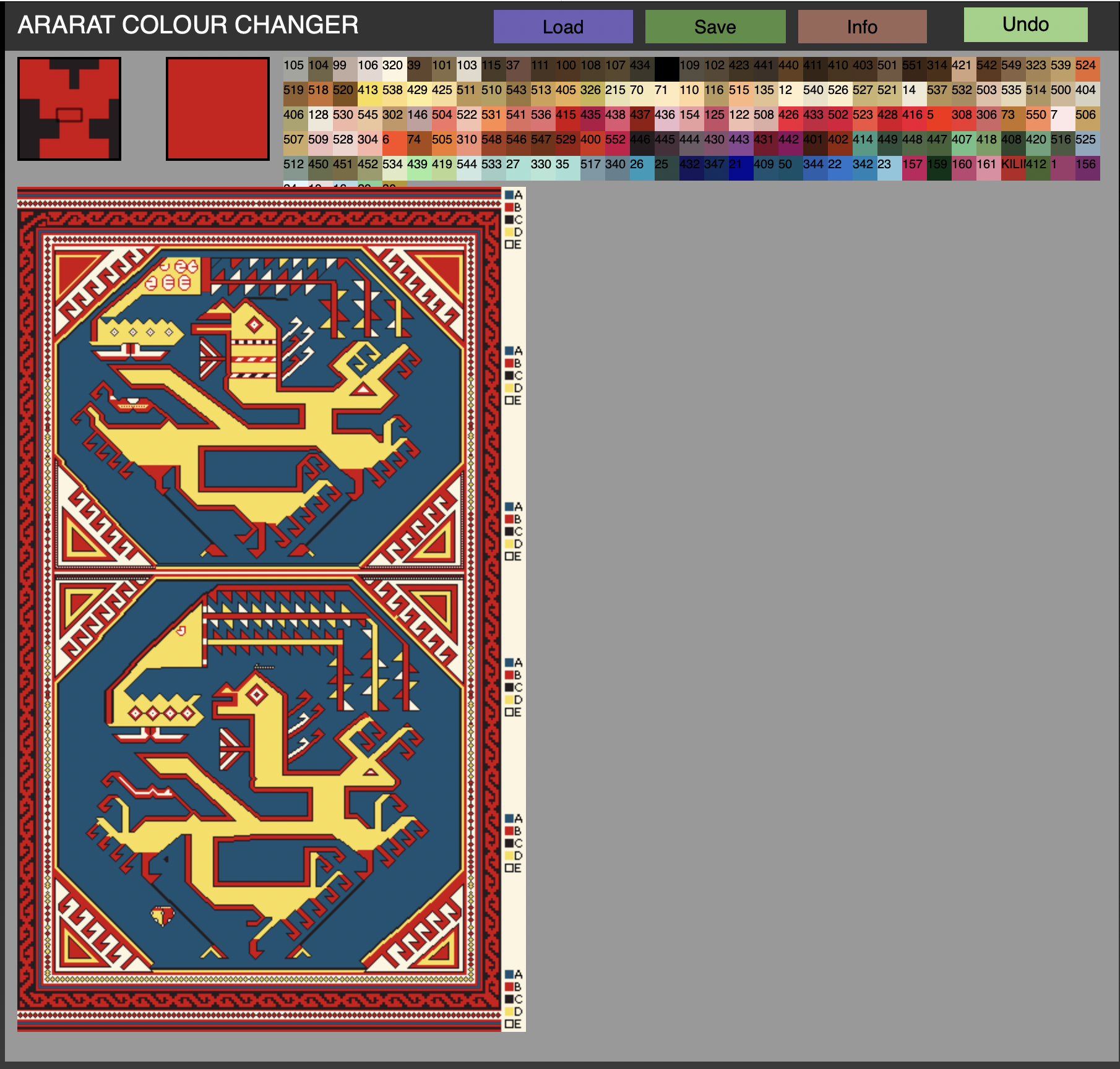
After the design process, the wool yarns are dyed with natural materials, and the design of the carpet is printed in exact size. We deliver those printouts and yarns to the workshop where the weaving will take place. Weavers prepare the wool weft and warp on the loom and start weaving according to the desired knot density and technique, and this process is controlled by the master trainer.
After the weaving process, the carpets are taken to the center for the final finishing process and are offered for sale in our store after the finishing is completed.
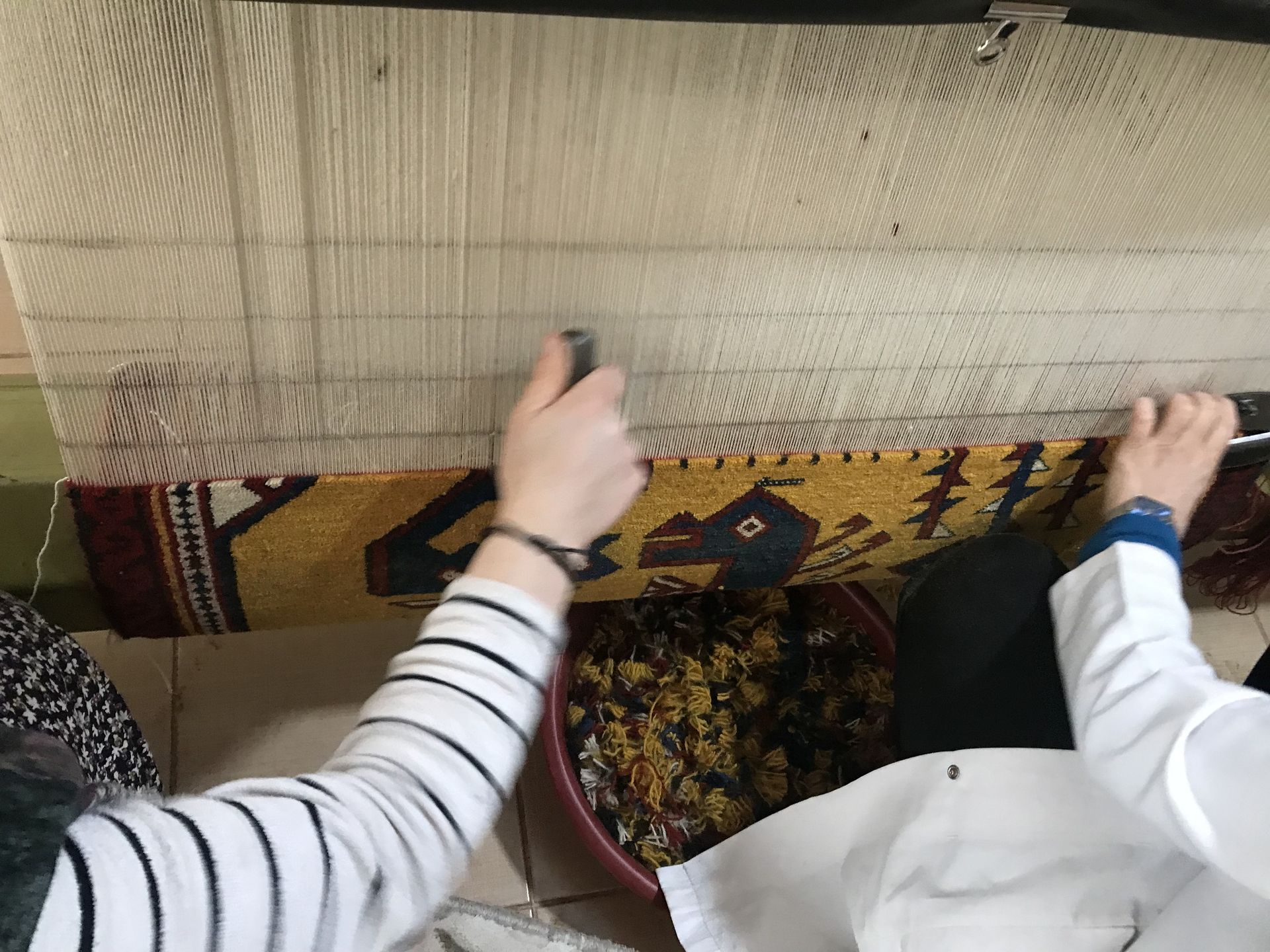 Photo: Weaving Dragon Carpet, by Ararat Rugs
Photo: Weaving Dragon Carpet, by Ararat Rugs
